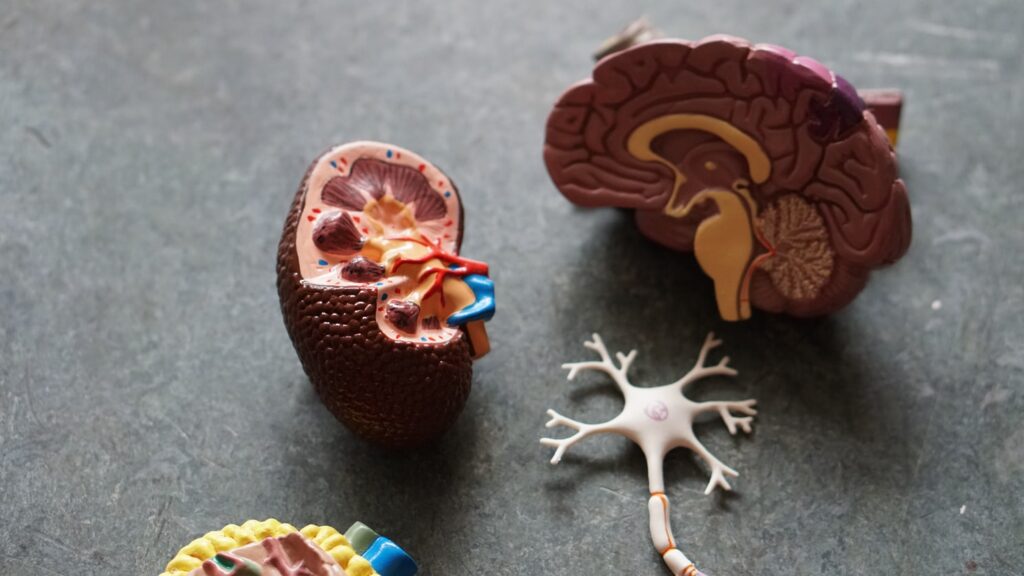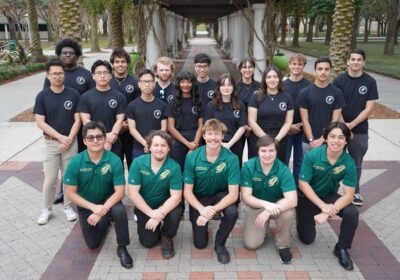USF biomedical engineers, psychiatrists use neuroimaging technology to more effectively treat depression

With the rise of depressive disorders due to the COVID-19 pandemic calling for many to quarantine and isolate themselves from the outside world, a group of USF scientists are looking for ways to help support the growing number of those suffering.
A current study initiated by a team of USF biomedical engineers and psychiatrists, including Glenn Currier, chair of the Department of Psychiatry and Behavioral Neurosciences as well as senior author of the study, indicates a sign of hope for those seeking effective depression treatment.
“We’re looking for new treatments for depression because it’s a huge burden on people in society, especially with COVID-19 going on,” said Currier. “So, we’re seeking out new approaches that are safe, effective and ultimately work.”
People diagnosed with severe depression that do not respond to antidepressant medications are treated with what is known as repetitive transcranial magnetic stimulation (rTMS). This form of treatment involves the use of a small coil placed on an area of one’s head to noninvasively reach the brain. The coil then creates pulses through electromagnetic induction to interact with brain cells by changing the surrounding magnetic field to reduce the depression of the patient.
The rTMS treatment, though approved by the FDA in 2008, has not brought about consistent results among its patients because doctors haven’t been able to closely and effectively examine the brain’s responses through this treatment method, according to professor at the Department of Medical Engineering Huabei Jiang.
This notable ineffectiveness of rTMS pushed Shixie Jiang, third-year psychiatry resident at the Morsani College of Medicine, to reach out to his father Huabei about starting a study with the hopes of increasing the effectiveness of depression treatment results in patients by using a new neuroimaging technique known as diffuse optical tomography (DOT).
“One day, I think we were having dinner, Shixie actually mentioned it to me and asked whether it was possible to use DOT to monitor rTMS treatment and then I almost instantly responded and said ‘yes,’” said Huabei.
DOT uses near-infrared spectroscopy to take images of the brain. With these images, researchers are able to obtain clear and optimized images of the area being treated for depression, which then allows them to look more closely at how rTMS functions with regard to each individual patient.
The results of the study were published in April, but started in January 2018. The researchers tested seven patients diagnosed with depression, of which two were men and five were women between the ages of 17 and 49, and six non-depressed patients, including five men and one woman between the ages of 16 and 36, who served as a control group. The paid volunteers were treated using rTMS and DOT to see the results.
The participants were each seated in a TMS chair and had to wear a medium-sized 256-channel EEG cap on their heads, said Currier.
“[The biomedical engineer team members] brought a machine over from biomedical engineering which was a prototype. So, it’s a very large kind of a halo with all these wires sticking out that was put on people’s heads as they’re getting this treatment,” said Currier.
After getting situated, the participants were then asked to not speak or move and to keep their eyes open as the 3D imaging process began.
The results of the study indicated a prominent difference in the hemoglobin responses of the patients previously diagnosed with depression in comparison to the non-depressed participants. The depressed patients’ hemoglobin levels changed over a longer period of time while the non-depressed participants’ hemoglobin levels changed more rapidly.
Huabei said this revealed that depressed patients who are receiving rTMS treatment aren’t experiencing effective results due to their brain responding to the treatment in various different ways, which would then require personalized treatment adjustments.
Using this information, improvements in depression treatment are potentially going to be made. However, in order to see real progress, more work and research needs to be done, according to Huabei.
“Most of the research is actually coming out of the engineering department and we have an interest in writing research grants to the National Institutes of Health to do a bigger version of this, to make sure that findings in a small number of people hold up in a bigger group,” said Currier.
If given the opportunity to expand on the data research that had been collected, Huabei identified two main goals he wants to accomplish. He would like to identify a biomarker of the hemodynamic changes identified in the preliminary study and then further optimize the data for magnetic stimulations.
“We hope we will actually be able to do this because this way, you can treat your patient very effectively and also optimally,” said Huabei. “Then eventually, you can achieve so-called personalized treatment, which occurs when one person may need 40 minutes of treatment while another only needs 10 minutes.”
Due to the results of this preliminary study, the researchers believe DOT can be utilized in treatments of other mental health disorders, such as obsessive-compulsive disorder and autism.
Huabei believes pursuing studies such as this one allows for advancements in mental health advancements and awareness not only in the realm of science but also in society.
“You have to treat depression and get a cure because there’s a chance you may not live,” he said. “Our job here is really to be able to help.”







